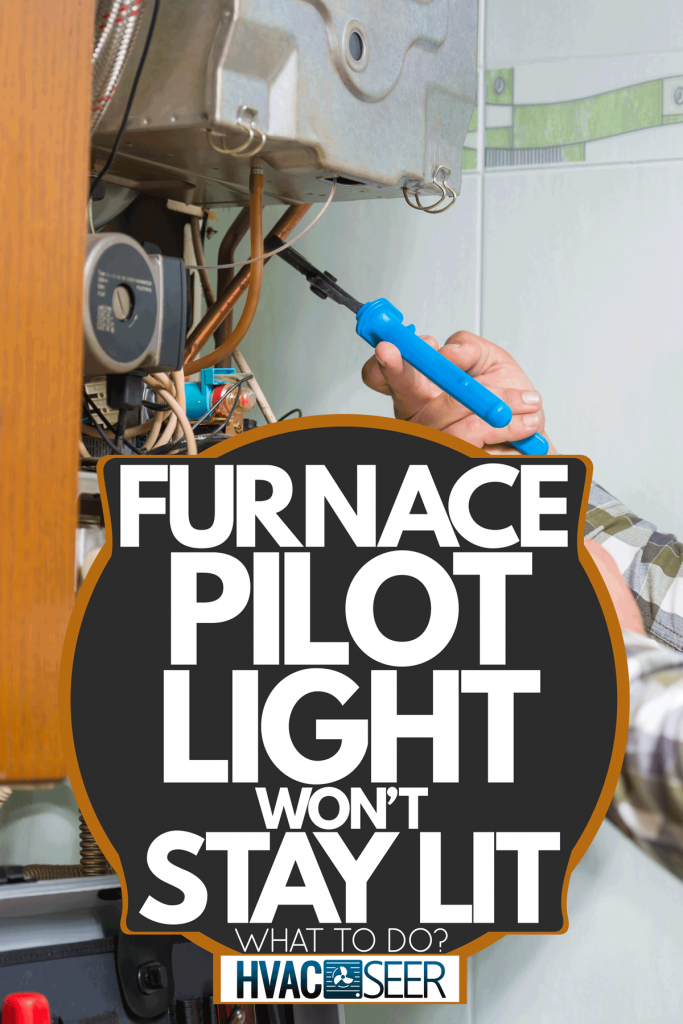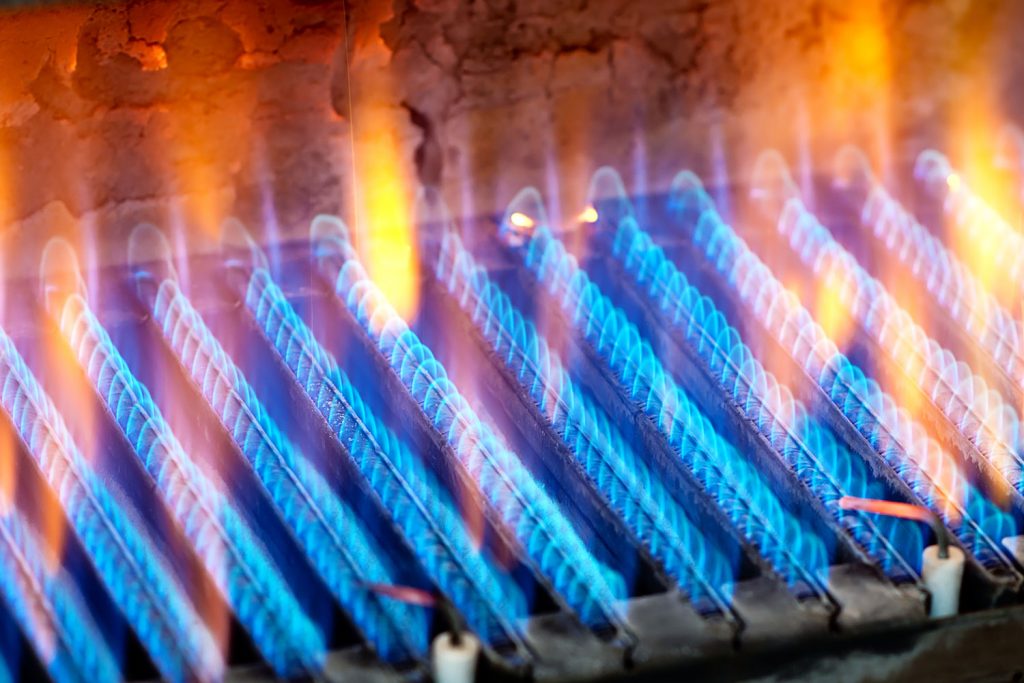A furnace pilot light that won't stay lit can be a huge inconvenience. While modern furnaces may utilize electric ignition, older gas furnaces have a standing pilot light that should be lit at all times for the unit to function. But what do you do when the pilot light doesn't stay lit? And what causes this? We've researched this topic for you, and in this post, we will discuss how to remedy this issue.
Here are the most common reasons why a furnace pilot light won't stay light:
- Faulty Gas Regulator
- A Drafty Environment
- Clogged Pilot Orifice
- A Bad Thermocouple
- Furnace Needs Replacing
One of the best ways to prevent your pilot light issues is to have your furnace routinely inspected and maintained by an HVAC professional. It's best to have this service performed once to twice a year to ensure proper functionality. Continue reading to learn more about how to troubleshoot a furnace pilot light that keeps going out.

Reasons Why A Furnace Pilot Light Won't Stay Lit

Faulty Gas Regulator
The gas regulator is located on the outside of your home, and it regulates the flow of natural gas opening to your furnace and other gas-based appliances. If the regulator is old or broken, it may prevent gas from moving inside of it.
To determine if the gas regulator is causing the issue with your furnace, check the other gas bass appliances in your house to see if they are functioning. Does your gas still work? Is your gas dryer getting hot? If not, it could be possible that your furnace's pilot isn't getting enough gas. And if this is the case, you'll need to contact your gas supplier so that they can come to inspect the line and make any necessary repairs.
A Drafty Environment
If you notice that your furnace is pilot light only stays lit for a few hours anytime, the issue could be a draft. For example, do you see that the pilot light blows out after a door is left ajar or a window is left open? Or, have any strong winds blown towards the furnace at all, causing the pilot to go out?
The best way to prevent this is to either place a barrier in front of the furnace and take note of environmental conditions to see if there is a connection. You can also replace the furnace with a newer electric model.
Clogged Pilot Orifice
The pilot orifice of a furnace is the opening where natural gas is released to pilot light. Over the years, the office can become clogged with debris, dirt, and even dead bugs. This can interfere with the light's ability to stay lit. An excellent way to determine if this is the cause of your issues is to observe your pilot light when it's on. When a pilot light burns, there should be a steady blue flame present. If you notice that the flame is yellow and wavy, the orifice could be clogged.
The quickest way to remedy this issue is simply cleaning the orifice to remove the dirt and debris. To do this, turn off the pilot light and the power to the furnace. Give the pilot about a half-hour to cool down. Once it's cooled down, take a safety pin or a needle and scrape away any debris that may be blocking the opening. If you prefer not to get your hands dirty, you can also call an HVAC professional to perform this task for you. If the orifice appears damaged in any way, you can also replace it for about $10 to $15.
A Bad Thermocouple
One of the most common reasons why pilot light won't stay lit is a bad thermocouple. A furnace thermocouple is a copper rod that is also known as the "flame sensor." It works as a safety mechanism to shut the gas off of the furnace if the pilot goes out. However, worn or damaged thermocouples can malfunction and, as a result, fail to shut off the gas in the furnace. When this happens, it can be hazardous as the natural gas can flow through your home, causing significant health and safety hazards.
Learn more about this multimeter on Amazon.
How To Re-light A Pilot Light
- If you can't locate the user's guide for your gas furnace, here is a list of steps that you can follow to re-light your pilot light.
- Locate the pilot light assembly. You will typically find this at the bottom center of the furnace, and you'll see a notch with Off, On, and Pilot settings.
- Turn the pilot valve to the "Off" position and wait for about 2 to 3 minutes. Turning the valve will keep incoming gas from flowing into the furnace. However, it will not remove gas that has already been emitted-- you'll need to wait for this gas to dissipate.
- Next, turn the valve to the "Pilot" setting. Then grab a lit match and place it over the pilot orifice while pressing the pilot button. Be sure to press the button until the flame is lit and burning blue. Once it is, turn the valve to its "On" position. At this point, the furnace should start immediately.
- Watch the pilot for about 1 to 2 minutes to make sure that it stays on. If the light burns out quickly, you may need to take a piece of sandpaper to clean off the flame sensor quickly. However, if you have tried it over two or three times, the issue may be the thermocouple.
What Are The Symptoms Of A Bad Thermocouple?
The biggest sign that your thermocouple is bad is if the pilot light on the furnace will not stay lit. Over time, thermocouples can become worn out or damaged and may need to be replaced. If the gas tube to the pilot light is clogged, the flame won't be strong enough to heat the thermocouple to the necessary temperature to light the pilot. If you notice that the pilot light is unsteady, undersized, or a yellow-orange hue instead of mostly blue, the thermocouple may need to be replaced.
Also, if you re-light the pilot light and notice that it only stays lit for a few minutes at a time, the chances are that the thermocouple has become faulty, in which case it would also need to be swapped out for a new one.
How Much Does It Cost To Replace A Thermocouple?
You can replace a thermocouple yourself. The price for the part is typically around $20. If you call a professional HVAC technician, the charge can be anywhere from $75 to $150. Sometimes they may charge a "service fee" just to inspect the furnace, so it's always best to first troubleshoot as much as possible on your own. Keep in mind, replacing a thermocouple only takes about 15 to 20 minutes to do.
Is It Dangerous If The Pilot Light Goes Out On A Furnace?
If the pilot light goes off in your furnace, but the gas remains on for an extended period, it can cause natural gas to leak into the room where it is located, as well as two other areas of the home through the vents. This can cause a buildup of gas in your home, which is a health and fire hazard. If the pilot light re-lights itself or is manually lit, it can even cause an explosion.
However, most modern furnaces come with an automatic shut-off gas flow valve in the event the pilot light goes out, which will prevent any risks of gas build-up in your home. Even failsafe systems can malfunction at times, so it's always best to make sure that your pilot light is functioning correctly and check your home for any strong odors of gas. If you notice a persistent smell of gas, do not attempt to light the pilot light or any other gas-operated appliances.
Should The Pilot Light Always Be On In A Gas Furnace?
Yes, if the furnace is in operation, the pilot light will need to be on for it to be functional. However, some homeowners turn off their furnace's pilot light in the warmer seasons when the gas furnaces aren't in use. Keep in mind that a gas furnace uses very little gas to power the pilot light. So turning off the pilot light in the warmer months can help you save a few bucks on your energy bill.
Wrapping Things Up
While troubleshooting can save you money in some cases when your pilot light goes out, it may be best in other circumstances to call an HVAC technician to figure out what's going on with your furnace-- especially if you've already replaced the thermocouple.
Before you go, be sure to check out our other posts:


